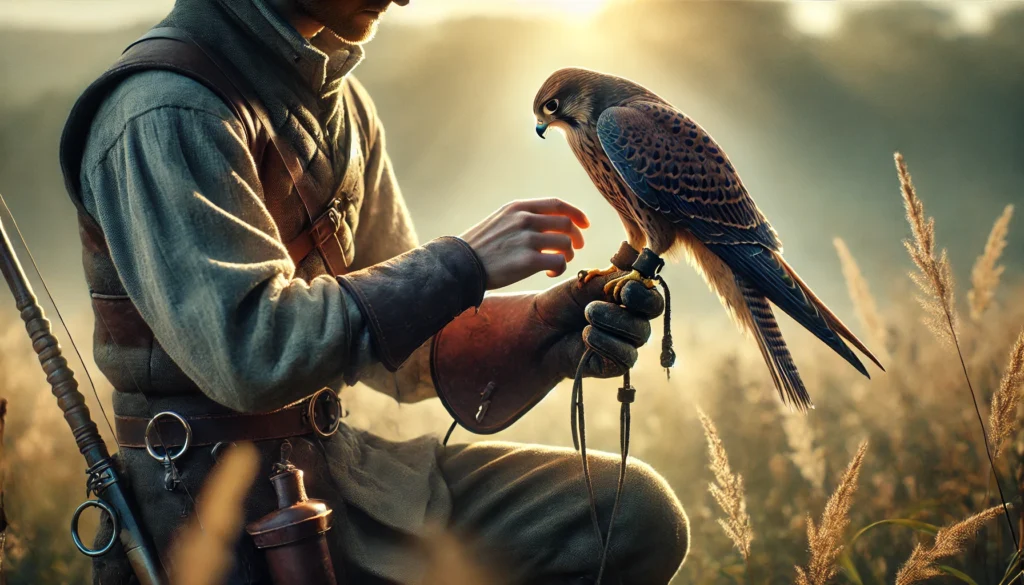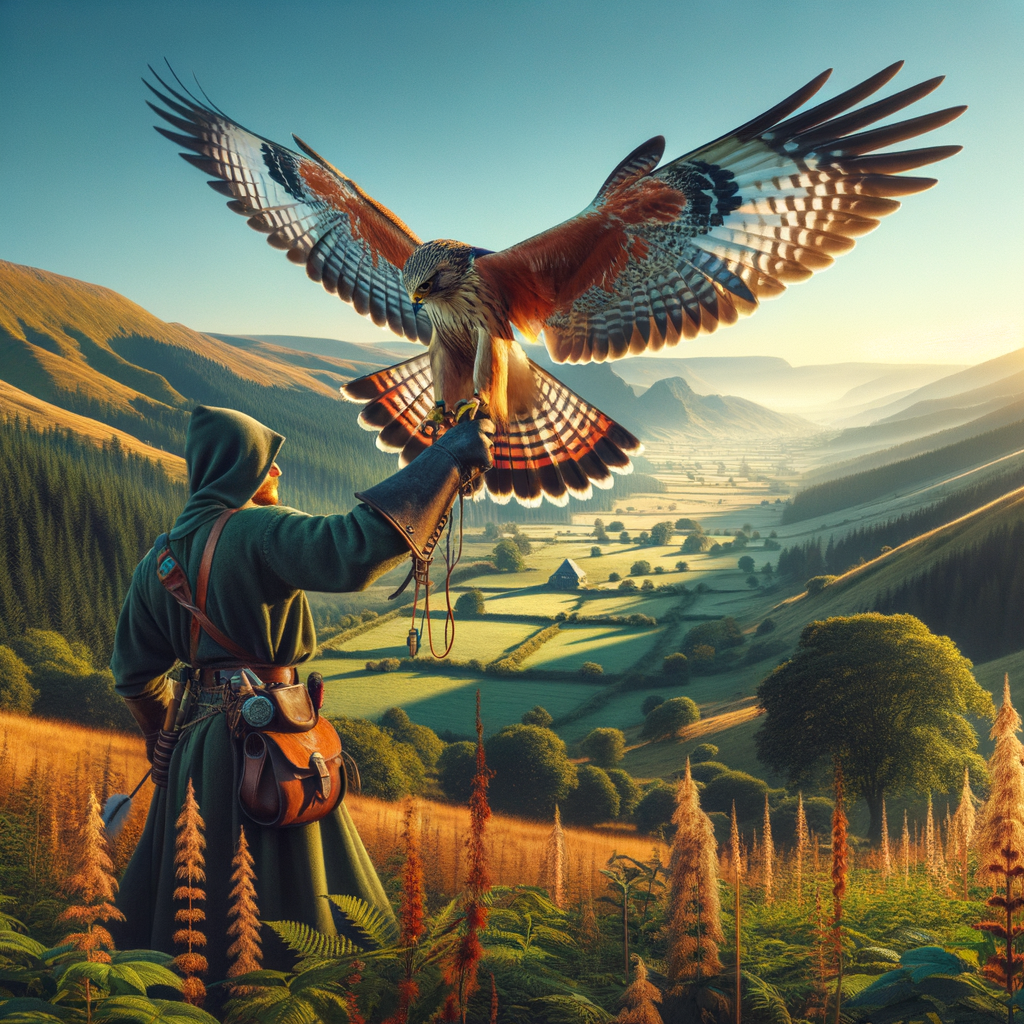Discovering Falconry in Australian Culture
- Falconry is an ancient practice that involves training birds of prey to hunt small animals.
- It has a rich history and cultural significance in many parts of the world, including Australia.
- In Australia, falconry integrates traditional Aboriginal knowledge and modern techniques.
- Falconry is considered a sustainable hunting method that respects wildlife and the environment.
- Training a bird of prey requires patience, dedication, and a deep understanding of the bird’s behavior.
- Birds used in falconry include species like falcons, hawks, and eagles.
- Falconry is not just about hunting; it’s also about creating a bond between the bird and the falconer.
- The practice contributes to wildlife conservation and helps rehabilitate injured birds.
- Participation in falconry can increase awareness and appreciation for Australia’s unique wildlife.
- Learning falconry provides educational opportunities and promotes the preservation of cultural heritage.
Discover the Magic of Falconry in Australian Culture
Imagine being in Ireland, where the ancient art of storytelling breathes life into every legend and tradition, connecting people across generations. Now, picture falconry as one of those timeless stories, but set against the breathtaking backdrop of Australia. Just like how the Irish treasure their folktales, Australians cherish the fascinating practice of falconry, which has become an important part of their culture.
At Learn Falconry, we’re thrilled to take you on a journey through the captivating world of Australian falconry. From the majestic birds of prey swooping across the Outback skies to the rich history that weaves this ancient practice into the fabric of Australian life, there’s so much to uncover!
Not only will you find out how falconry has adapted and thrived Down Under, but you’ll also learn why this practice is still very much alive today. Just like a good Irish tale brings a twinkle to your eye and a bit of wonder to your heart, the stories and traditions of Australian falconry will leave you mesmerized and a little more connected to nature.
So, continue reading to learn more about the magic, the history, and the heart behind falconry in Australia. We promise it will be as thrilling as hearing an Irish legend told by a crackling fire on a chilly evening.
The Rich History and Tradition of Falconry in Australian Culture
Falconry, the ancient practice of hunting wild quarry with trained birds of prey, has a unique and vibrant presence in Australia. The roots of Australian falconry are deeply intertwined with the country’s diverse ecosystems and rich cultural heritage, making it a fascinating blend of tradition and innovation.
Exploring Falconry in Australia
Falconry in Australia has become an important part of the country’s cultural identity, resonating deeply with both indigenous and non-indigenous communities. The art of falconry showcases the deep connection Australians have with nature and wildlife, reflecting the values of respect, conservation, and collaboration with the natural world.
Australia’s unique wildlife, including its birds of prey, has significantly influenced the practice. The Australian Hobby Falcon, known for its agility and speed, is a popular choice among falconers in the region. Understanding the different species of falcons here can provide insights into how these birds are trained and cared for within Australian falconry.
Australian Falconry Traditions
The Australian falconry traditions are a blend of historical practices and modern techniques. Historically, indigenous Australians have engaged in bird training for hunting and messaging purposes, which may share similarities with falconry practices found globally. Over time, these traditional techniques have evolved and integrated with contemporary falconry methodologies.
For instance, traditional hunting methods are often paired with modern equipment. Understanding the essential falconry kit here and various types of falconry techniques here shines a light on the tools and methods used to ensure safe and effective falconry practice in Australia.
Falconry in Oceania: Cultural and Conservation Impact
Falconry in Australia is part of a larger regional tradition within falconry in Oceania, encompassing countries like New Zealand and Pacific Island nations. This region’s unique ecological and cultural landscapes contribute to a distinctive approach to falconry.
Efforts in falconry and conservation here are particularly significant in Oceania. Falconry provides a non-invasive method for controlling pest populations and maintaining ecological balance. Furthermore, it aids in the reintroduction of species into the wild and contributes to educational programs focused on wildlife conservation.
Legal and Ethical Aspects
Practicing falconry in Australia comes with a responsibility towards the environment and adherence to stringent regulations. The legal aspects of falconry here in Australia ensure that the practice is conducted ethically and sustainably. This includes obtaining necessary permits, following conservation laws, and adhering to animal welfare standards.
Ethical falconry practices are emphasized to safeguard the well-being of the birds and the environment. Resources on ethical training practices here guide falconers on maintaining high standards while pursuing their passion.
Falconry Education and Community
Education plays a key role in promoting and preserving falconry traditions in Australia. Programs and clubs dedicated to falconry in cultures here facilitate knowledge sharing and community engagement. Building connections within these associations allows for a supportive environment where both novice and seasoned falconers can thrive.
Joining a falconry club here provides an excellent opportunity for enthusiasts to learn, share experiences, and uphold the ethical practices that make falconry a treasured part of Australia’s cultural heritage.
Falconry and Australian Culture in 2024
Conservation Efforts for Falconry Birds
In Australia, falconry is intertwined with significant conservation activities. The BirdLife Australia Raptor Group works tirelessly to promote the management, conservation, and study of birds of prey, including those involved in falconry. Key initiatives are focused on species such as the Black Falcon, who faces threats due to habitat loss and reduced prey populations.
- Black Falcon Conservation:
- Habitat Restoration: Replanting native vegetation and improving nesting areas.
- Population Estimates: Between 1,000 and 10,000 Black Falcons reside in Australia, with the population in decline, especially in the southeastern regions.
Population Status of Falcons
Understanding falcon populations helps shape conservation efforts:
| Species | Estimated Population | Trends | Key Threats |
|---|---|---|---|
| Black Falcon | 1,000 – 10,000 | Decreasing | Habitat loss, reduced prey, roadkill |
| Peregrine Falcon | Increasing | Stabilizing | N/A |
The Peregrine Falcon, for instance, has seen a comeback from nearly being extinct due to pesticide poisoning.
Threats to Falcon Populations
Nearby threats severely impact falcons in Australia:
- Habitat Loss: Urban expansion and deforestation.
- Reduced Prey: Decline in small mammal populations impacts falcon diet.
- Road Kill: Increased vehicle traffic.
- Nest Failures: Climate change and disturbances.
Falconry Practices in Australia
Despite being a sometimes isolated activity, falconry offers practitioners a chance to connect with these majestic birds more intimately:
- Common Species Used in Falconry:
- Peregrine Falcon: Adaptable and recovered from near extinction.
- Red-tailed Hawk: Widespread and versatile in hunting.
- Training and Hunting: Birds are trained to hunt small animals, maintaining traditional practices.
Technological Integration in Falconry
Falconry embraces technology, as seen with the Peregrine Falcon Cam at 367 Collins Street in Melbourne. It allows us to observe falcon life cycles up close.
Scientific Efforts in Falconry
Australian science supports falconry through initiatives such as:
- Australian Avian Genomics Initiative: This project generates reference genomes for Australian bird species, advancing our understanding and conservation.
| Initiative | Purpose |
|---|---|
| Habitat Restoration | Restore natural habitats for nesting |
| Population Surveys | Monitor and estimate the population trends |
| Raptor Research | Scientific studies to aid conservation |
| Genomic Initiative | Generate reference genomes for species study |
These multifaceted efforts collectively enhance the status and survival of raptors in the region.
Australian Falconry Community and Regulations in 2024
Falconry in Australia is often characterized by a fragmented community with limited interaction between practitioners. This isolation hampers support networks and hinders broader engagement:
- Regulatory Framework: Unclear and inconsistent, leading to legal ambiguities.
- Practitioner Engagement: Challenges in collaboration with authorities and veterinary services.
Despite these hurdles, the passion and commitment of Australian falconers play a crucial role in wildlife and conservation efforts, building a foundation for the future.
The Role of Falconry in Australian Culture
Falconry in Australia has a rich blend of tradition and modern conservation efforts. Despite facing challenges such as limited support and unclear regulations, dedicated individuals continue to practice this ancient art. Various initiatives, like the BirdLife Australia Raptor Group and the Australian Avian Genomics Initiative, play crucial roles in preserving and understanding both diurnal and nocturnal birds of prey. These efforts ensure that falconry remains an essential part of Australia’s conservation landscape.
From the remarkable recovery of the peregrine falcon to the ongoing efforts to protect the Black Falcon, the work being done is truly inspiring. Whether it’s through direct wildlife encounters or the use of advanced technology, falconry continues to captivate and contribute to the conservation of Australia’s unique avian species. This combination of tradition, passion, and science illustrates the significant role falconry plays in enriching Australian culture and supporting wildlife conservation worldwide.



